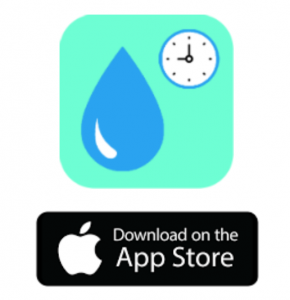by Dr. M | May 23, 2019 | Allergies, Cornea, Dry Eye, Education, Exam, Patient Care
Dr. Tang recently saw a 47-year-old woman who suffered from severe, chronic dry eyes. She had a great deal of discomfort, gritty sensation, and blurred vision for 6 months. She had a long history of dry eye due to an autoimmune disease and chronic allergies.
Therapy O ptions
ptions
The patient continued to have dry eyes despite multiple treatments: artificial tears every hour during the day and several times during the night; thermal therapy; punctal plugs; and several different prescription drops. The dryness caused irregularities on the surface of her cornea that were contributing to her blurry vision.
When all of the traditional treatments failed, we discussed Autologous Serum Eye Drops (ASED) and Prokera. The patient decided to try the serum tears first.
The Initial Results…relief from dry eye!
“I felt an immediate change in my eyes after the first day of serum tears use. This is the first time in as long as I can remember that my eyelids actually glide over my eye without discomfort!
Dr. Tang has gone above and beyond to help me find the right treatment for my dry eyes. I would absolutely recommend her.” Lori
How it Works
ASED treatment is effective because the drops contain antibodies and growth factor that come from the patient’s own blood. These drops repair the surface of the cornea, helping the patient to see better, feel better, and enjoy an improved quality of life. In a recent study, the visual acuity improved in 100% of patients*.
Made in a Specialized Pharmacy
 The Serum eye drops are created in the lab from the patient’s blood, so they are uniquely customized to treat the patient’s condition. The drops are made by a specialized compounding pharmacy.
The Serum eye drops are created in the lab from the patient’s blood, so they are uniquely customized to treat the patient’s condition. The drops are made by a specialized compounding pharmacy.
To make the serum eye drops, the patient has blood drawn, then the blood is spun through a centrifuge to extract the clear serum. The serum in placed in a dropper bottle and mixed with a sterile saline solution.
A three-month supply of drops is made from each blood draw. These drops can be used with the same frequency as artificial tears. Patients may continue to use the serum drops as long as needed.
Find our if serum tears are right for you
If you would like to explore this treatment to help alleviate dry eye, call us to make an appointment today. For more information on ASED treatment, click on the articles below.
Thicker than Water
*National Institute of Health
by Dr. M | Jan 15, 2018 | Education, LASIK, Medical Eye Care, Patient Care, Procedure, Surgery
To help maintain your great vision after LASIK, the use of eye drops is key. A patient recently shared a smartphone alarm app with us that reminds you to use your eye drops regularly!
LASIK surgery is a high-tech procedure that improves your vision in about 20 minutes. The laser application itself takes just seconds.

The Eye Drop Alarm keeps you on track with your medications.
But LASIK is much more than just a quick LASER treatment to the eye. Pre-Operatively, there are multiple exams, measurements, interviews, and calculations.
The Post-Operative period is also important to a successful, stable outcome. We consider the postoperative period to be ONE YEAR.
During this year, Dr. Moran highly recommends that patients use a rigorous schedule of artificial tears. Patients who follow this post-op protocol, do better, heal faster, and have less chance of their vision changing for the worse.
Using eye drops after surgery does a number of things:
- Prevents Infection
- Decreases Inflammation
- Provides Added Moisture
- Aids in Healing
Remembering to take your drops the first week is easy.
Seeing without glasses or contacts is an amazing change. Patients are enthusiastic and stay on top of their drop schedule. As more time passes, patients may not think about their new vision as much. Although the newness of the better vision wears off, the need for drops doesn’t!
Studies have shone that your eyes may need supplemental moisture for more than three months after the surgery. Even though the eyes don’t feel dry, they need the added moisture to maintain quality tear film and to provide the best visual result.
The Eye Drop Alarm smartphone app is a great way to help you keep up with your drop schedule:

Eye Drop Alarm
A patient recently showed us an iPhone app he downloaded (iPhone only at this point, sorry Android users.) The app is free for download, well written, easy to use and comprehensive.
The full description can be found at http://www.eyedropalarm.com/ The app is free and requires no login or personal information. It has a full database of eye drops, even those used for other eye problems like glaucoma.

Special instructions too!
The features are useful and extensive. As seen in the illustration, this app also indicates if the drops need any special instructions, for example, the FML should be shaken before use. Using multiple drops requires you to wait five minutes between each different drop so that the eye can absorb each medicine…the app automatically schedules each drop 5 minutes apart!
If you have an iPhone and have to take drops, we highly recommend EyeDropAlarm. You can download the app by scanning this QR code or through iTunes.


 ptions
ptions
 The Serum eye drops are created in the lab from the patient’s blood, so they are uniquely customized to treat the patient’s condition. The drops are made by a specialized compounding pharmacy.
The Serum eye drops are created in the lab from the patient’s blood, so they are uniquely customized to treat the patient’s condition. The drops are made by a specialized compounding pharmacy.



